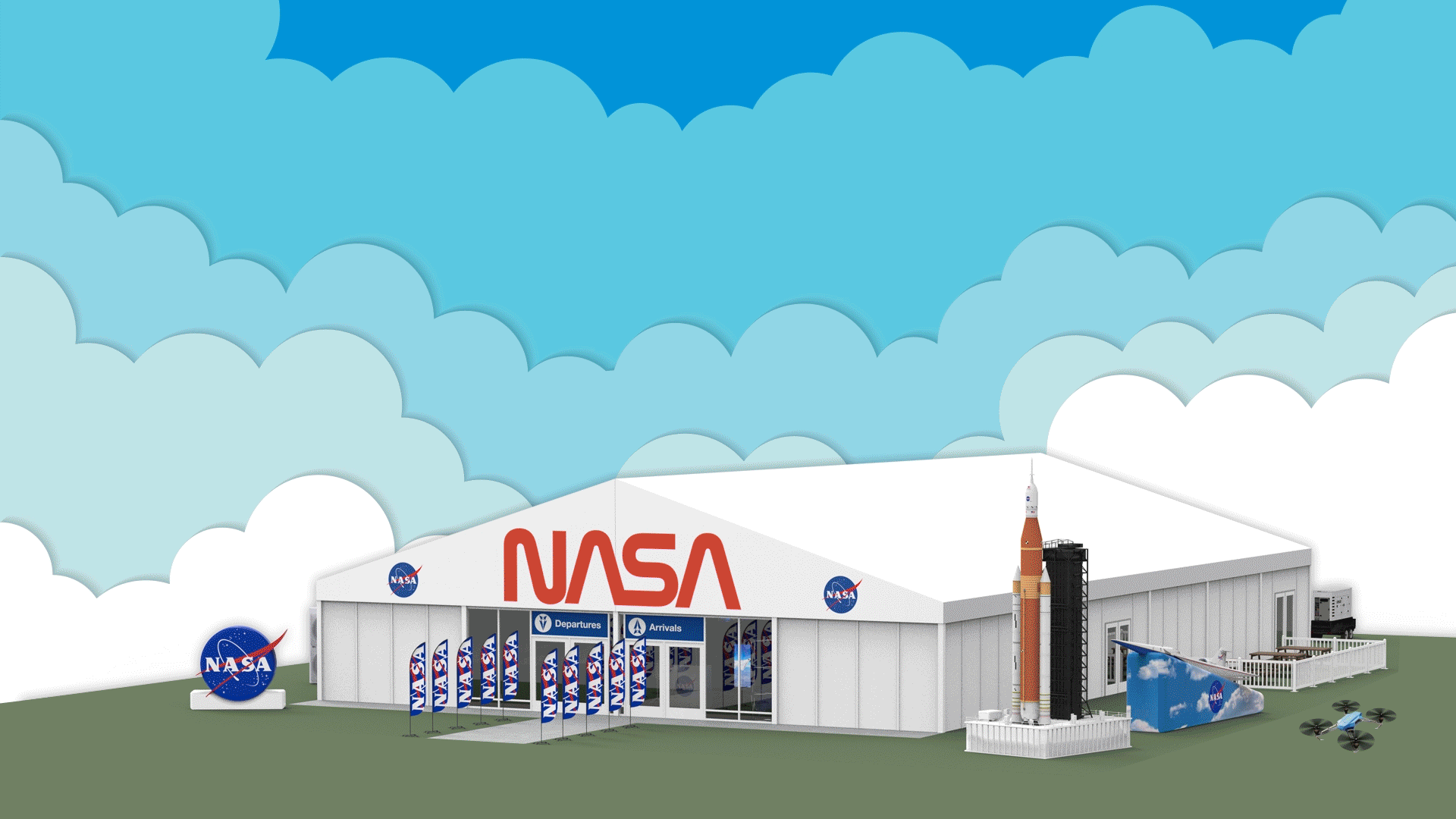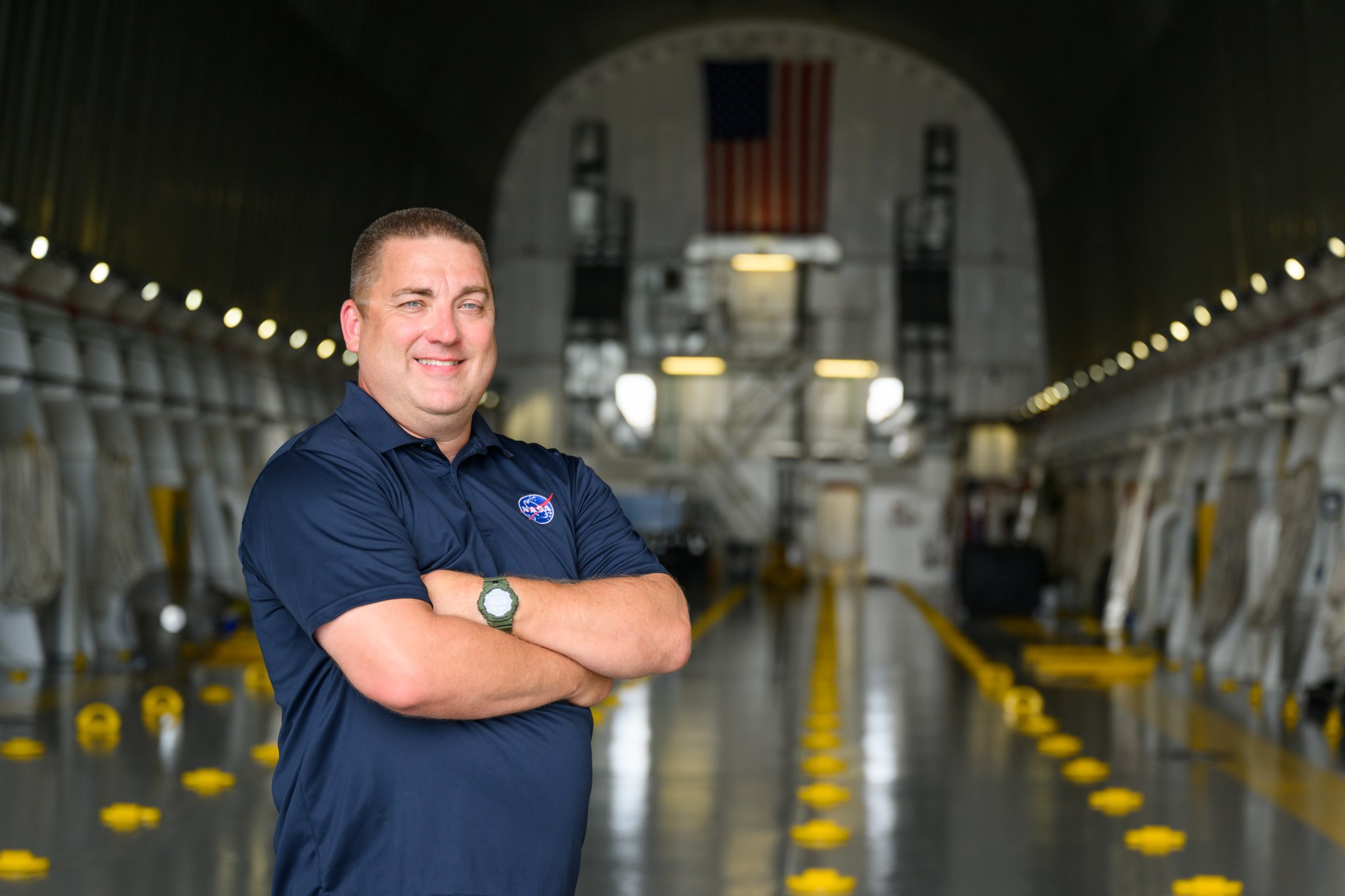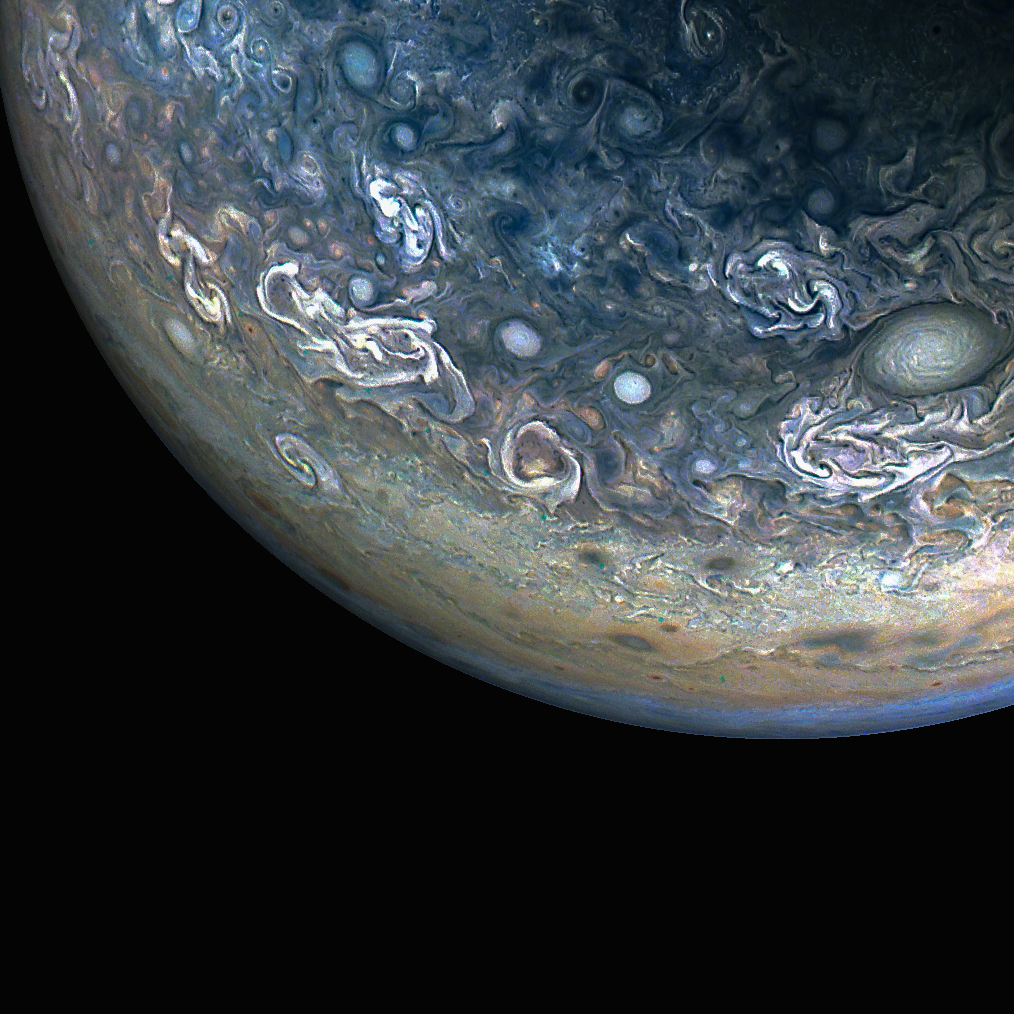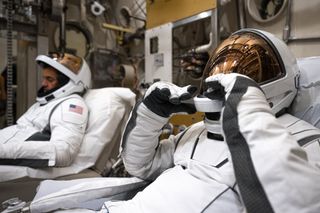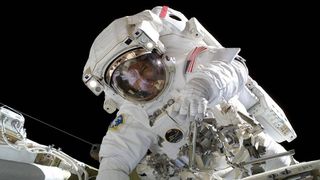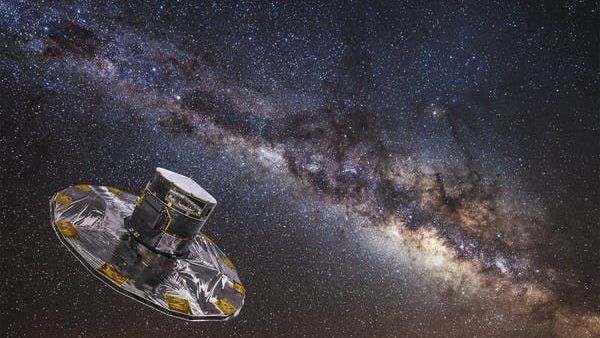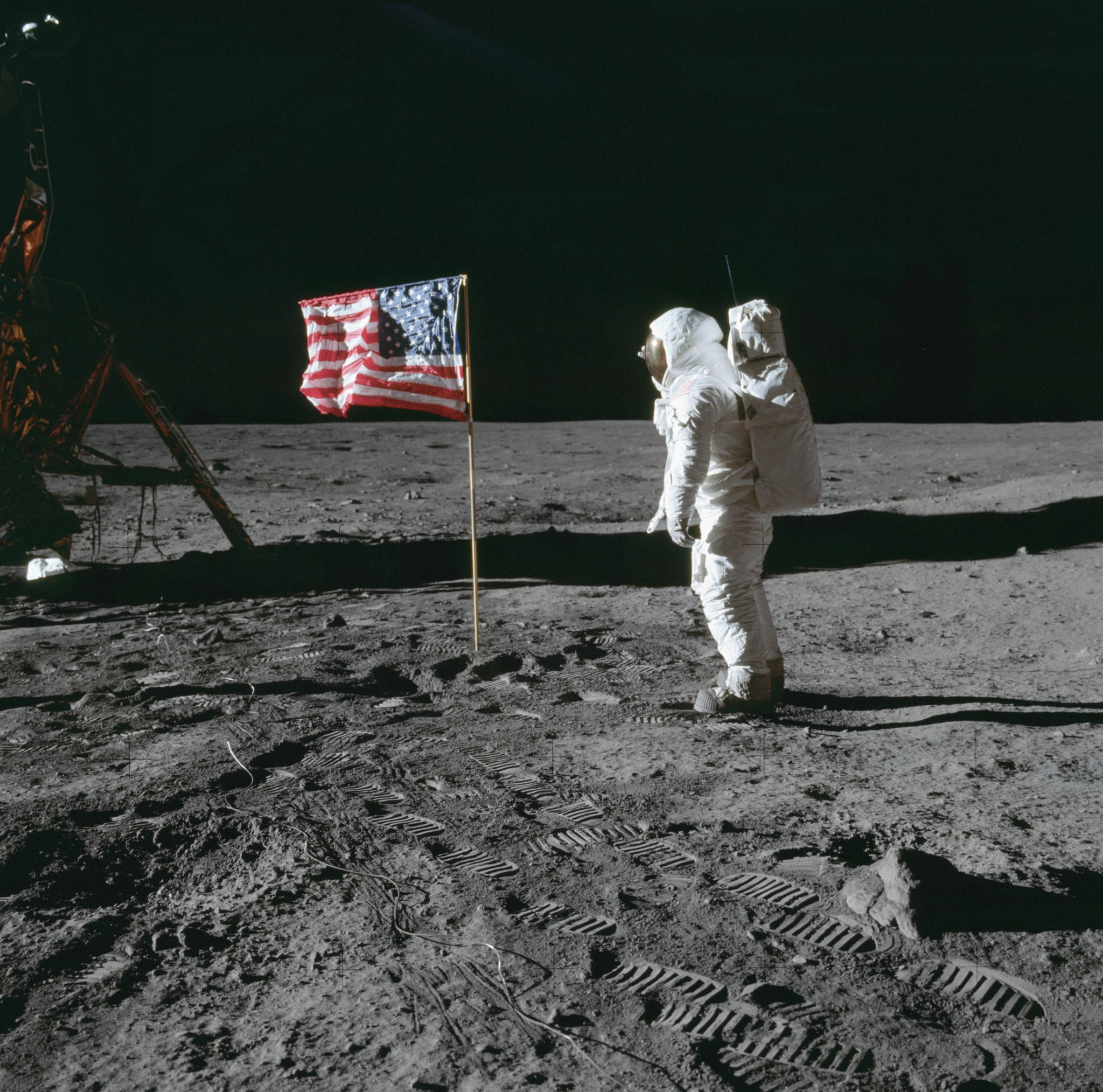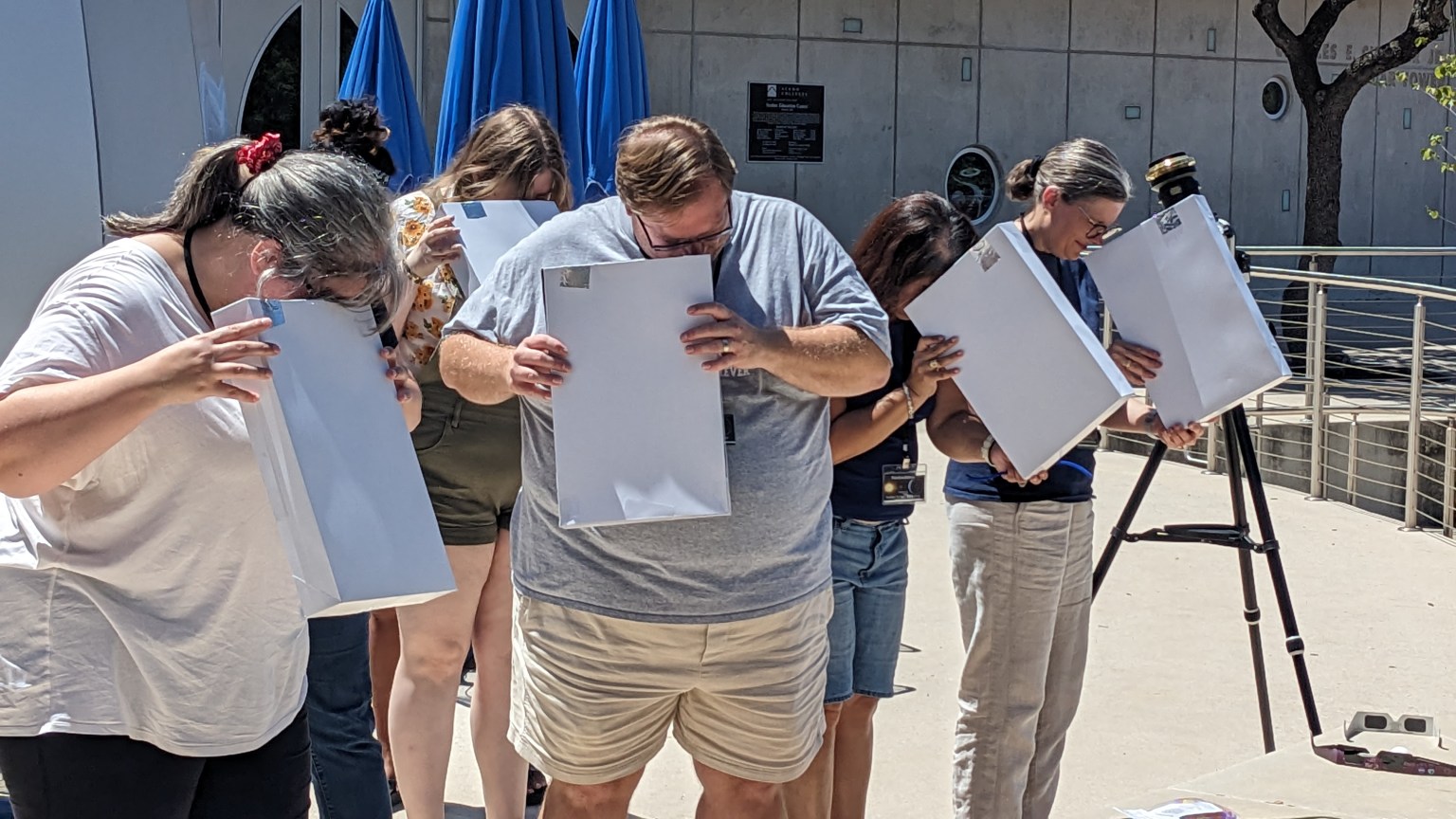3 min read Preparations for Next Moonwalk Simulations Underway (and Underwater) NASA’s pavilion as it will look at EAA AirVenture Oshkosh 2024 is seen in this illustration, Flying into the graphic, clockwise from upper left: the X-66 sustainable flight demonstrator, X-59 quiet supersonic demonstrator, Saab 340B, a small drone, an air taxi concept, and a DeHavillland “Dash 7.” Both the Saaab and Dash 7 are part of the Electrified Powertrain Flight Demonstration project. NASA / Maria Werries Each summer, aviation enthusiasts and experts from around the planet – including NASA’s…
Read MoreDay: July 19, 2024
Exploring the Moon: Episode Previews
2 Min Read Exploring the Moon: Episode Previews Extravehicular Activity and Human Surface Mobility Program Discover. Learn. Explore. NASA’s video series, Exploring the Moon, takes a “behind-the-scenes” look at humanity’s next steps on the Moon. Here is your first look at some of the key moments from the upcoming series! Scroll down or navigate through CONTENTS, to the side, to explore! To view this video please enable JavaScript, and consider upgrading to a web browser that supports HTML5 video Who, What, When, Where, Why, and How… How many small steps…
Read MoreI am Artemis: John Campbell
John Campbell, a logistics engineer at NASA’s Marshall Space Flight Center, stands on NASA’s Pegasus barge July 15. NASA How do you move NASA’s SLS (Space Launch System) rocket’s massive 212-foot-long core stage across the country? You do it with a 300-foot-long barge. However, NASA’s Pegasus barge isn’t just any barge. It’s a vessel with a history, and John Campbell, a logistics engineer for the agency based at NASA’s Marshall Space Flight Center in Huntsville, Alabama, is one of the few people who get to be a part of its…
Read MoreNASA’s Juno Mission Captures the Colorful and Chaotic Clouds of Jupiter
Image data: NASA/JPL-Caltech/SwRI/MSSSImage processing by Gary Eason © CC BY During its 61st close flyby of Jupiter on May 12, 2024, NASA’s Juno spacecraft captured this color-enhanced view of the giant planet’s northern hemisphere. It provides a detailed view of chaotic clouds and cyclonic storms in an area known to scientists as a folded filamentary region. In these regions, the zonal jets that create the familiar banded patterns in Jupiter’s clouds break down, leading to turbulent patterns and cloud structures that rapidly evolve over the course of only a few…
Read MorePolaris Dawn crew shows off new SpaceX spacesuits for 1st private spacewalk (photos)
This first ever private spacewalk will be bringing some serious style to outer space. SpaceX‘s privately-funded crewed mission, Polaris Dawn, is moving toward a launch sometime this summer. The four-person crew, which includes the mission’s funder, billionaire philanthropist Jared Isaacman, recently completed acceptance testing for SpaceX’s new extravehicular activity (EVA) spacesuits, which they will wear as they become the first private citizens to perform a spacewalk on orbit. In addition to Isaacman, the crew includes two lead operations engineers at SpaceX, Sarah Gillis and Anna Menon, serving as mission specialists,…
Read MoreNASA delays ISS spacewalks indefinitely to investigate spacesuit coolant leak
NASA says its next spacewalk will be delayed indefinitely until engineers understand more about what caused a coolant leak on June 24. Tracy Dyson, a NASA astronaut, had a brief spacesuit leak a month ago while still in the hatch of the International Space Station (ISS). She and Mike Barrett had just opened the door for a 6.5-hour spacewalk for maintenance activities, when showers of ice particles erupted from a spacesuit connection to the ISS. The spacewalk was suspended, but the astronauts were never in any danger, NASA has emphasized.…
Read MoreA high-speed particle struck the Gaia space telescope — but Gaia came back stronger than ever
In the eleventh year of its mission, the European Space Agency (ESA)’s Gaia space telescope has suffered a pair of technical snags. The telescope has spent its time in space precisely measuring the positions and motions of distant stars, offering an immense boon to astronomers. ESA said that Gaia suffered first a puncture from a fast-moving micrometeoroid, then an electronics malfunction. Due to these issues, the telescope began sending its Earthbound operators gigabytes of junk data. “Gaia typically sends over 25 gigabytes of data to Earth every day, but this…
Read MoreExplorers on the Moon: Apollo 11 Landing
NASA On July 20, 1969, astronauts Neil Armstrong and Buzz Aldrin landed on the Moon in the lunar module “Eagle.” Afterward, Aldrin posed for this photo, taken by Armstrong, beside the United States flag. The Apollo 11 mission’s main goal was to perform a crewed lunar landing and return to Earth. The crew also conducted scientific exploration of the Moon’s surface and deployed a television camera to transmit signals to Earth. Armstrong and Aldrin spent 21 hours and 36 minutes on the Moon. They explored the surface, took extensive photographs…
Read MoreNASA-Funded Studies Explain How Climate Is Changing Earth’s Rotation
6 min read Preparations for Next Moonwalk Simulations Underway (and Underwater) The Arctic is captured in this 2010 visualization using data from NASA’s Aqua satellite. A new study quantifies how climate-related processes, including the melting of ice sheets and glaciers, are driving polar motion. Another study looks at how polar meltwater is speeding the lengthening of Earth’s day. NASA’s Scientific Visualization Studio Researchers used more than 120 years of data to decipher how melting ice, dwindling groundwater, and rising seas are nudging the planet’s spin axis and lengthening days. Days…
Read MoreNASA Awards Launch Excitement for STEM Learning Nationwide
3 Min Read NASA Awards Launch Excitement for STEM Learning Nationwide Southwest Girl Scout Council Leaders test out their “cereal box” pin-hole viewers to study the sun during educator training program. NASA awards inspire the next generation of explorers by helping community institutions like museums, science centers, libraries, and other informal education institutions and their partners bring science, technology, engineering, and mathematics (STEM) content to their communities. NASA’s Next Generation STEM project has expanded the Teams Engaging Affiliated Museums and Informal Institutions (TEAM II) program to include a new tier…
Read More